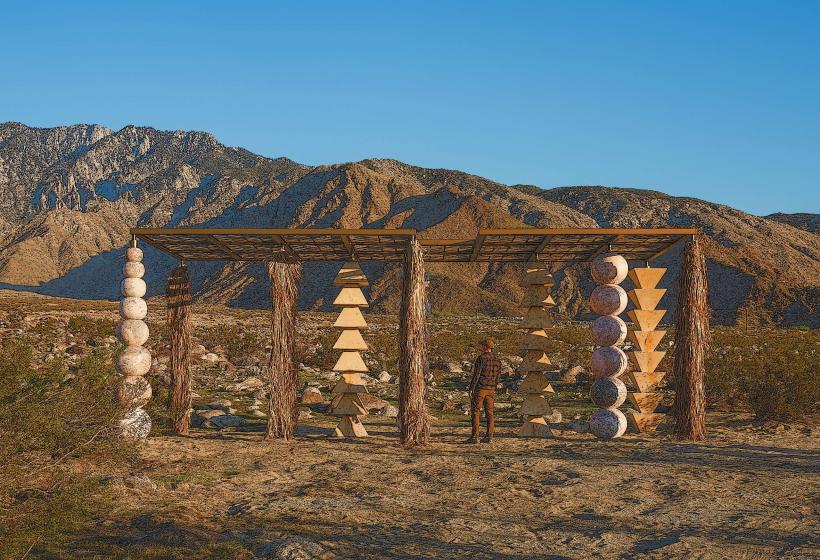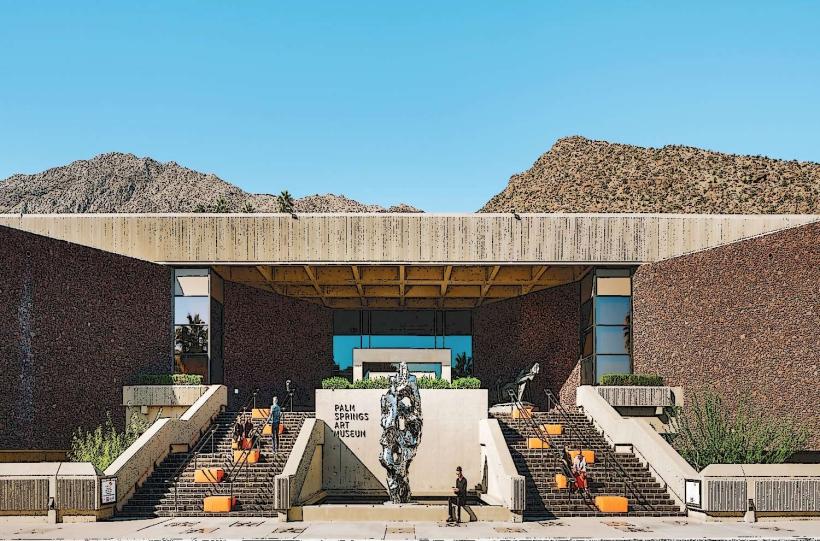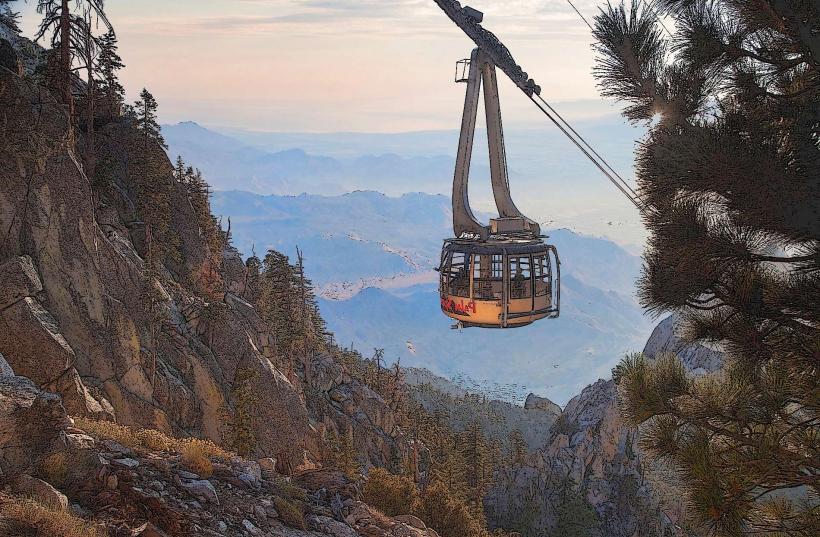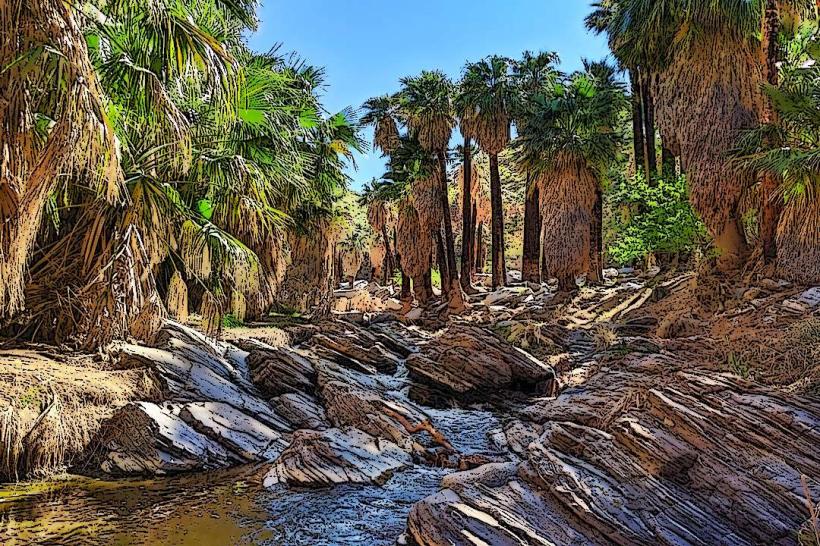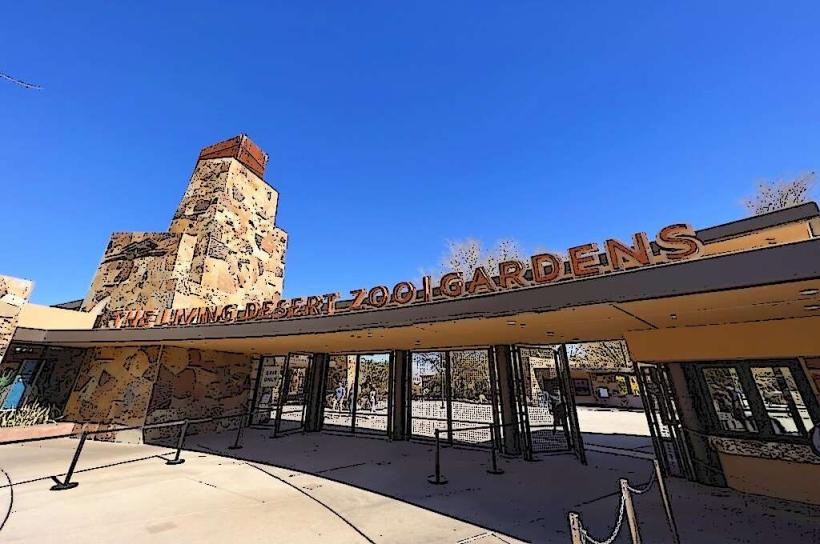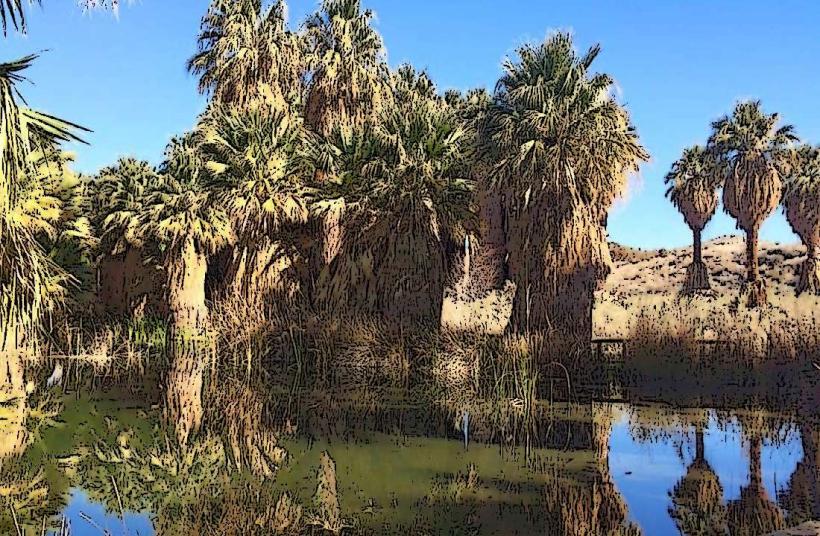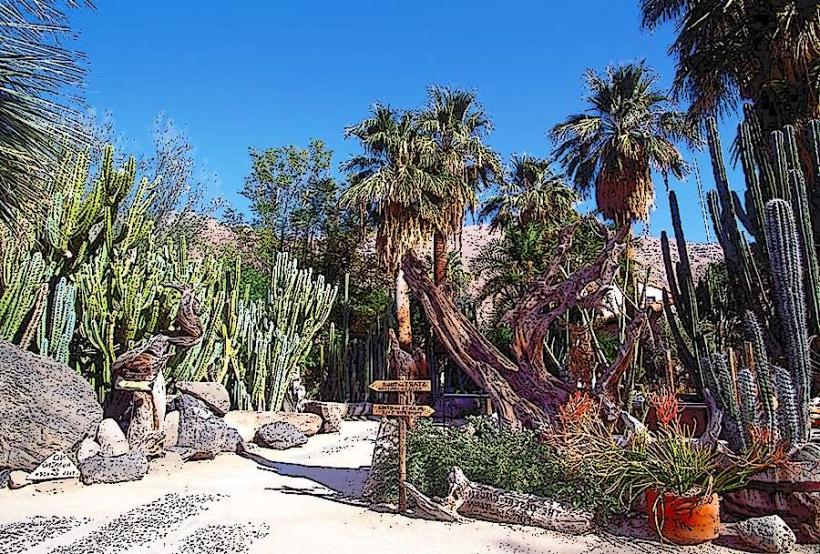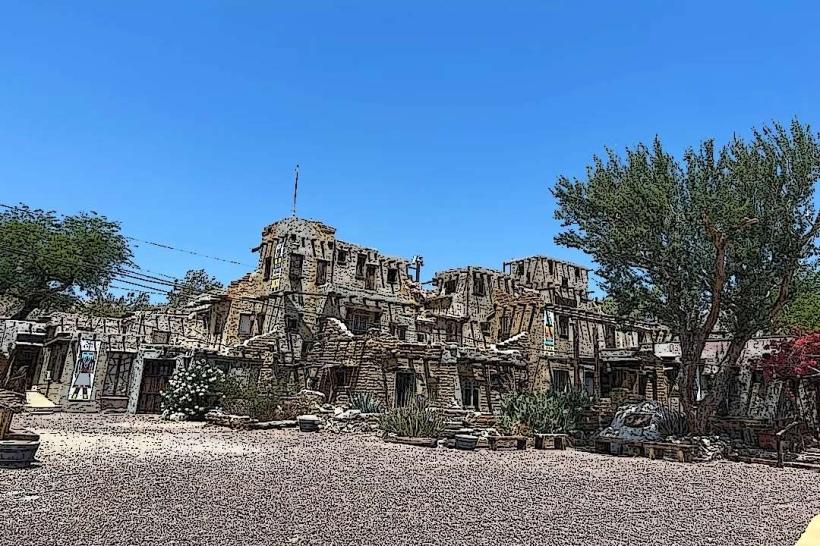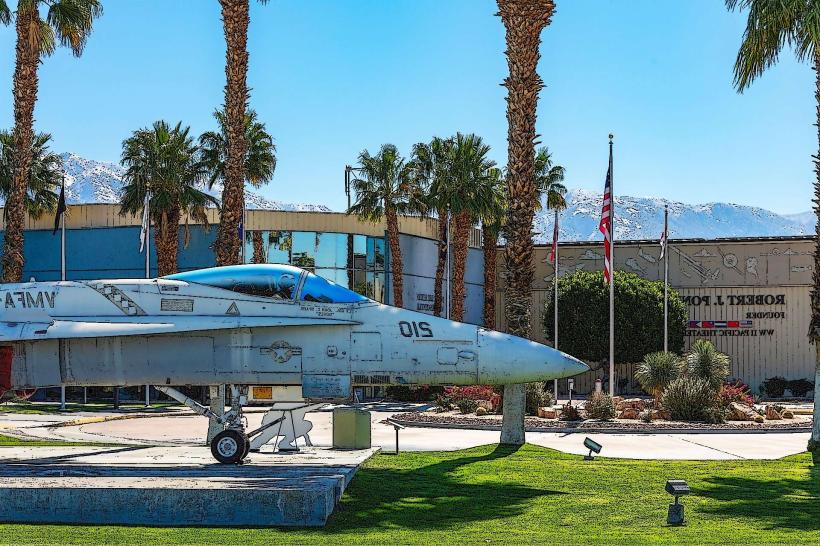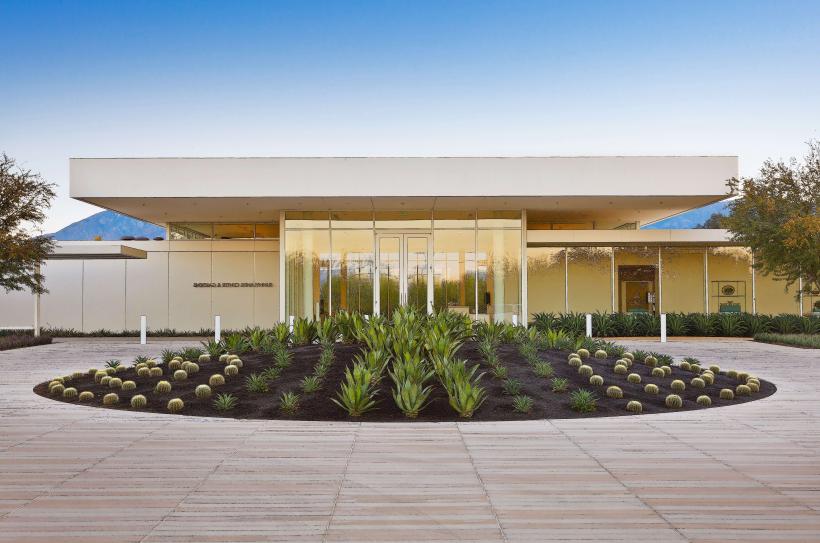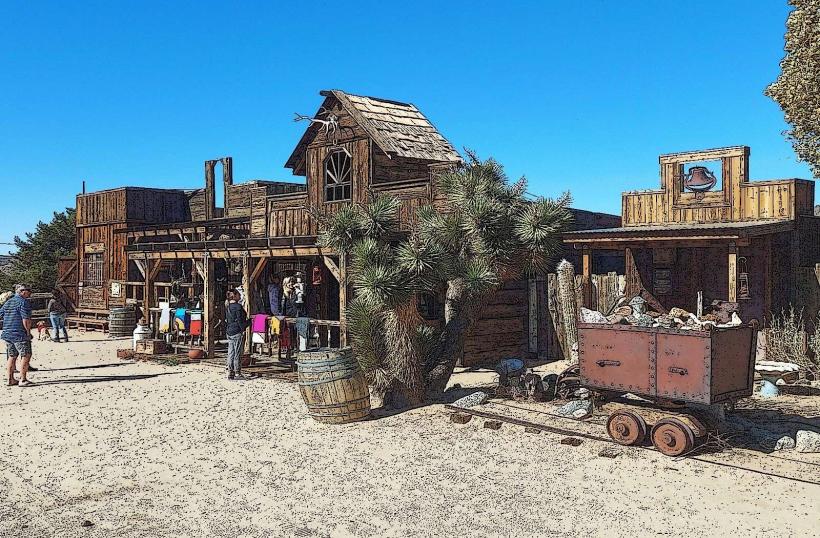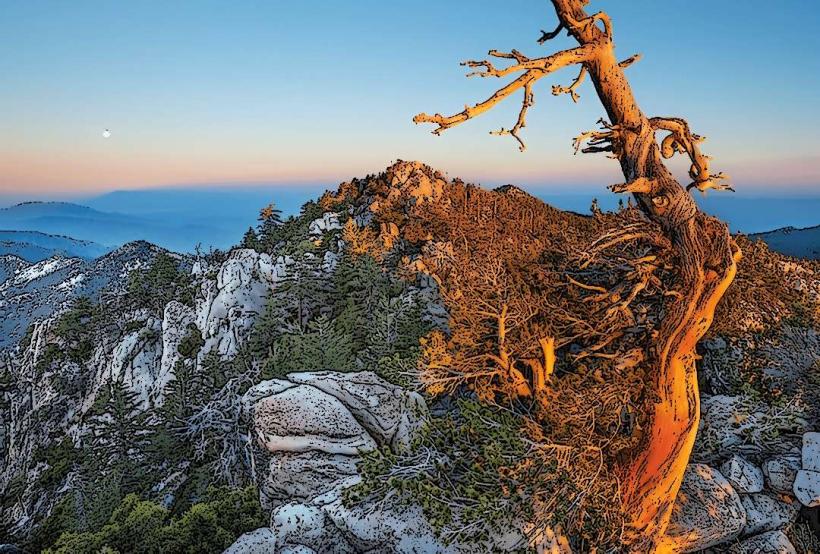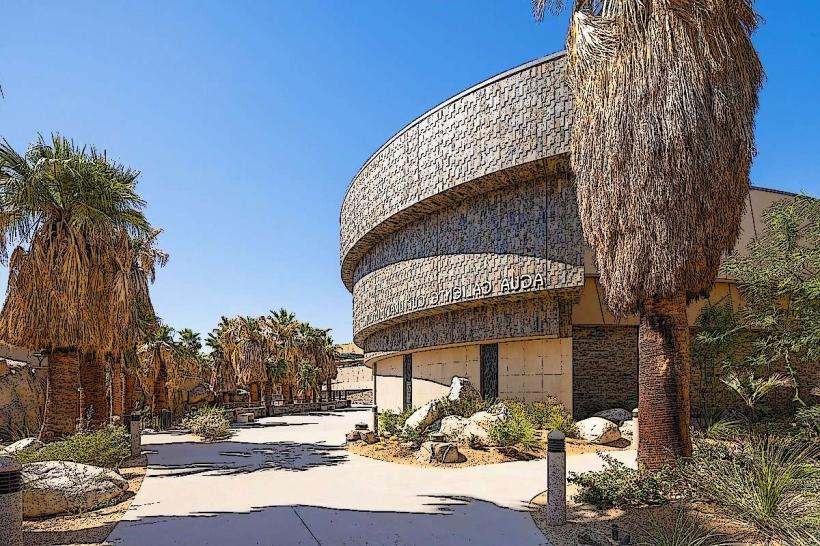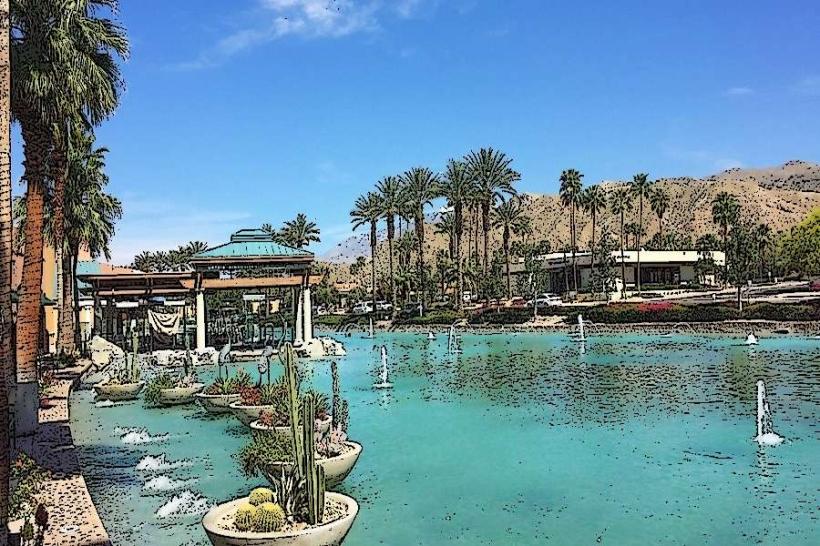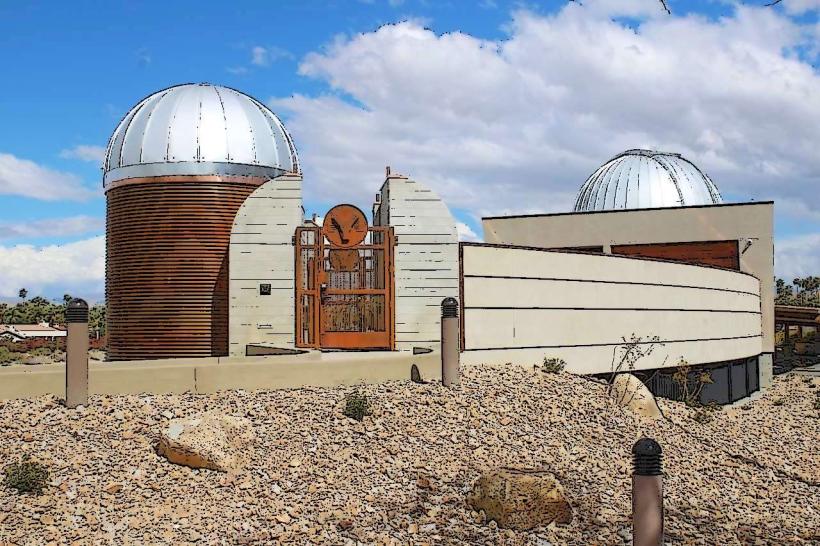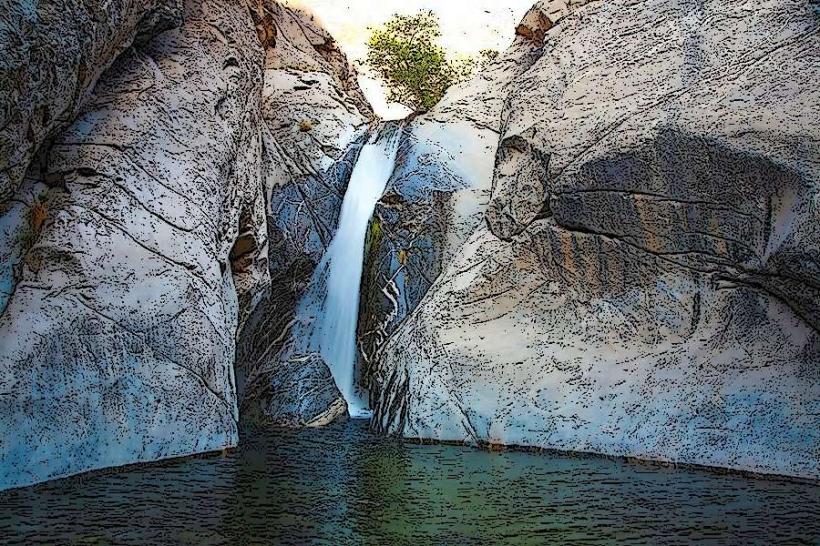Information
Landmark: Joshua Tree National ParkCity: Palm Springs
Country: USA California
Continent: North America
Joshua Tree National Park, Palm Springs, USA California, North America
Joshua Tree National Park, located in southeastern California, is a remarkable place where two distinct desert ecosystems—the Mojave Desert and the Colorado Desert—meet. With an area of over 795,000 acres, it is celebrated for its otherworldly landscapes, unique flora and fauna, and diverse recreational opportunities. The park draws visitors with its surreal rock formations, the iconic Joshua trees (Yucca brevifolia), and its role as a haven for outdoor enthusiasts, artists, and nature lovers.
Geography and Natural Features
The park is located at the intersection of the Mojave and Colorado Deserts, which results in a diverse range of flora and fauna. The Mojave Desert, which occupies the higher elevations, is home to the famous Joshua tree, while the Colorado Desert, in the lower elevations, is characterized by creosote bush scrub. The park's varied topography includes rugged mountains, vast sand dunes, and valleys, offering a wide range of ecosystems within a relatively small area.
The highest point in the park is Quail Mountain, which stands at 5,814 feet (1,772 meters) above sea level, while the lowest point is the Colorado Desert area, around 1,000 feet (300 meters) above sea level. The climate varies greatly depending on the elevation, with cooler temperatures in the higher Mojave Desert and hotter conditions in the Colorado Desert.
Flora and Fauna
The park is home to a wide range of plant species, many of which are adapted to desert life. The Joshua tree, for which the park is named, is a key feature of the Mojave Desert. These trees can live for hundreds of years and have an unusual appearance, with spiky leaves and a unique branching structure.
In addition to Joshua trees, visitors can find other plant species such as creosote bushes, cholla cacti, yuccas, and various types of wildflowers that bloom in the spring. The park is also home to a variety of wildlife, including bighorn sheep, desert tortoises, coyotes, and over 250 species of birds. Some of these animals, like the desert tortoise, are endangered, making the park an important area for conservation.
Key Attractions and Activities
1. Hiking and Trails
Joshua Tree National Park offers a variety of hiking trails that allow visitors to explore its unique landscapes. The trails vary in difficulty, from short, easy walks to challenging hikes.
Hidden Valley Trail: A short, 1-mile loop that takes visitors through a picturesque area surrounded by large boulders. This is one of the most popular trails in the park.
Ryan Mountain Trail: A 3-mile round-trip hike that ascends Ryan Mountain and provides panoramic views of the park's vast desert landscape.
Barker Dam Trail: A 1.3-mile loop that takes hikers to a historic water reservoir built by early cattle ranchers. The trail also features views of rock formations and wildlife.
2. Rock Climbing
Joshua Tree is one of the premier rock climbing destinations in the United States, attracting climbers from around the world. The park features over 8,000 climbing routes, ranging from beginner to expert. The unique granite rock formations, such as the boulders of Hidden Valley, offer world-class climbing opportunities. Whether you're bouldering or tackling traditional climbing routes, the park offers a vast playground for climbers.
3. Stargazing
Joshua Tree National Park is recognized as an International Dark Sky Park, making it one of the best places in the United States for stargazing. The clear, dark skies offer breathtaking views of the night sky, including the Milky Way, constellations, and meteor showers. Visitors can also see the distant glow of the cities along the horizon, but the lack of light pollution ensures that the stars take center stage.
4. Wildlife Viewing
The park is a haven for wildlife, with a range of species adapted to the desert environment. Some of the most notable animals include:
Desert tortoises, which are typically seen during the cooler months.
Bighorn sheep, often spotted on rocky cliffs.
A variety of birds, including red-tailed hawks, desert crows, and peregrine falcons.
The best times for wildlife viewing are during the early morning and evening hours when animals are most active. Visitors should exercise caution and keep a safe distance from all wildlife.
5. Photography
Joshua Tree is a photographer’s dream, with its unique landscapes, dramatic light, and unusual plants. Sunrise and sunset are particularly stunning, casting long shadows and rich colors across the park’s terrain. The twisted Joshua trees and boulder formations create dramatic backdrops, making it a favorite spot for nature photographers.
Visitor Services and Amenities
Joshua Tree National Park has several visitor centers where guests can learn more about the park’s history, wildlife, and geology. These centers offer maps, exhibits, and other resources to help plan your visit.
Joshua Tree Visitor Center: Located in the town of Joshua Tree, this center is the main entry point and offers exhibits on the park's flora, fauna, and cultural history.
Cottonwood Visitor Center: Located near the southern entrance, this center provides information on the southern portion of the park.
Black Rock Nature Center: Situated in the northwest part of the park, this center offers interactive exhibits, guided walks, and ranger-led programs.
Camping
There are nine campgrounds within Joshua Tree, including both reservation-based and first-come, first-served options. These campgrounds are scattered throughout the park and offer an excellent opportunity to experience the desert landscape under the stars. Some of the most popular campgrounds include:
Hidden Valley Campground: Close to the Hidden Valley Trail, this campground is often full during peak seasons.
Jumbo Rocks Campground: Known for its striking rock formations, this is another popular spot.
Black Rock Canyon Campground: Located near the western entrance, this site is often quieter and more remote.
Reservations are strongly recommended during peak seasons (fall, winter, and spring).
Safety Tips
Hydration: The desert climate can be extreme, especially in the summer months, so it is important to carry plenty of water with you. There are no reliable water sources in the park, so plan accordingly.
Sun Protection: Always wear sunscreen, hats, and sunglasses to protect yourself from the intense desert sun.
Wildlife Safety: The park is home to many animals, some of which can be dangerous, such as rattlesnakes and scorpions. Always give animals plenty of space and never feed them.
Weather: Temperatures can vary widely. Summers can be extremely hot, with temperatures often exceeding 100°F (38°C) in lower elevations, while winters can bring cold nights and even snow at higher elevations.
Access and Fees
The park is accessible via several entrances:
West Entrance (Joshua Tree Visitor Center)
North Entrance (Oasis Visitor Center)
South Entrance (Cottonwood Visitor Center)
An entrance fee of $30 per vehicle is required, which grants access for seven days. If you plan to visit multiple national parks, an annual America the Beautiful pass may be a cost-effective option.
Conclusion
Joshua Tree National Park is a unique and diverse destination that offers something for everyone, from hikers and climbers to photographers and stargazers. Its dramatic landscapes, fascinating plant and animal life, and recreational opportunities make it a must-visit for nature lovers and outdoor enthusiasts. Whether you're looking to explore the rugged terrain, take in the night sky, or simply escape into the desert's quiet beauty, Joshua Tree offers an unforgettable experience.



